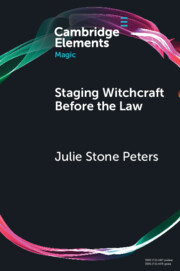Refine search
Actions for selected content:
52 results
Chapter 5 - Government, Citizens, and Property
-
- Book:
- The State, the Law, and the People in the Roman Empire
- Published online:
- 11 December 2025
- Print publication:
- 11 December 2025, pp 229-277
-
- Chapter
- Export citation
16 - Dative and Genitive Variability in the History of English
- from Part II - Tracking Change in the History of English
-
-
- Book:
- The New Cambridge History of the English Language
- Published online:
- 23 October 2025
- Print publication:
- 23 October 2025, pp 449-479
-
- Chapter
- Export citation
10 - Noun Phrases
- from Part II - Constructing Grammar
-
- Book:
- How to Create a Language
- Published online:
- 23 October 2025
- Print publication:
- 02 October 2025, pp 203-226
-
- Chapter
- Export citation
Chapter 7 - Plato
-
- Book:
- Aggregation and Antithesis in Ancient Greece
- Published online:
- 21 October 2025
- Print publication:
- 28 August 2025, pp 173-190
-
- Chapter
- Export citation
Chapter 8 - Justice
- from Part IV - Virtues of Indirect Caring
-
- Book:
- Attention to Virtues
- Published online:
- 25 July 2025
- Print publication:
- 14 August 2025, pp 193-215
-
- Chapter
- Export citation
Chapter 6 - Kant’s Critique of Achenwall’s Account of Property in His Feyerabend Lectures
-
-
- Book:
- Kant's Lectures on Political Philosophy
- Published online:
- 18 July 2025
- Print publication:
- 07 August 2025, pp 103-121
-
- Chapter
- Export citation
1 - Tudor State, Chartered Companies and Colonization
-
- Book:
- Land, Law and Empire
- Published online:
- 01 September 2025
- Print publication:
- 07 August 2025, pp 9-34
-
- Chapter
- Export citation
10 - Pledge and Lien
-
- Book:
- Property Law in China
- Published online:
- 09 July 2025
- Print publication:
- 24 July 2025, pp 286-314
-
- Chapter
- Export citation
11 - Possession and Expropriation
-
- Book:
- Property Law in China
- Published online:
- 09 July 2025
- Print publication:
- 24 July 2025, pp 315-346
-
- Chapter
- Export citation
THE NATURE AND JUSTIFICATION OF POSSESSORY TITLE
-
- Journal:
- The Cambridge Law Journal / Volume 84 / Issue 2 / July 2025
- Published online by Cambridge University Press:
- 03 October 2025, pp. 431-457
- Print publication:
- July 2025
-
- Article
-
- You have access
- Open access
- HTML
- Export citation
5 - Property’s Elements and Scope
- from Part II - The Natural Right to Property
-
- Book:
- Natural Property Rights
- Published online:
- 17 April 2025
- Print publication:
- 24 April 2025, pp 82-104
-
- Chapter
- Export citation
The argument structure of have and other transitive verbs
-
- Journal:
- Journal of Linguistics / Volume 61 / Issue 1 / February 2025
- Published online by Cambridge University Press:
- 23 December 2024, pp. 171-201
- Print publication:
- February 2025
-
- Article
-
- You have access
- Open access
- HTML
- Export citation

Staging Witchcraft Before the Law
- Skepticism, Performance as Proof, and Law as Magic in Early Modern Witch Trials
-
- Published online:
- 06 December 2024
- Print publication:
- 09 January 2025
-
- Element
-
- You have access
- Open access
- HTML
- Export citation
13 - Visual Art, Galleries, Collectibles, and NFTs
- from Part IV - Intellectual Property and Ownership Rights
-
-
- Book:
- The Cambridge Handbook of Law and Policy for NFTs
- Published online:
- 02 November 2024
- Print publication:
- 17 October 2024, pp 254-274
-
- Chapter
- Export citation
3 - Moriscos, Arabic Old Christians, and Spanish Jurisprudence (1492–1614)
-
- Book:
- A Tale of Two Granadas
- Published online:
- 27 July 2023
- Print publication:
- 10 August 2023, pp 78-115
-
- Chapter
- Export citation
Chapter 5 - Lynchpins of Sovereignty
- from Part I - Origins Revisited
-
-
- Book:
- Diaspora and Literary Studies
- Published online:
- 20 July 2023
- Print publication:
- 10 August 2023, pp 95-111
-
- Chapter
- Export citation
5 - The Tensions of Absolute Property
-
- Book:
- The Making of Modern Property
- Published online:
- 13 July 2023
- Print publication:
- 27 July 2023, pp 204-234
-
- Chapter
- Export citation
Possession, feelings of ownership and the endowment effect
-
- Journal:
- Judgment and Decision Making / Volume 2 / Issue 2 / April 2007
- Published online by Cambridge University Press:
- 01 January 2023, pp. 107-114
-
- Article
-
- You have access
- Open access
- HTML
- Export citation
Ownership or possession? On Bart Wilson's concept of ownership
-
- Journal:
- Journal of Institutional Economics / Volume 19 / Issue 2 / April 2023
- Published online by Cambridge University Press:
- 21 October 2022, pp. 276-279
-
- Article
- Export citation
3 - Possession of goods and land
-
- Book:
- Australian Property Law
- Published online:
- 19 September 2022
- Print publication:
- 30 September 2022, pp 75-106
-
- Chapter
- Export citation
